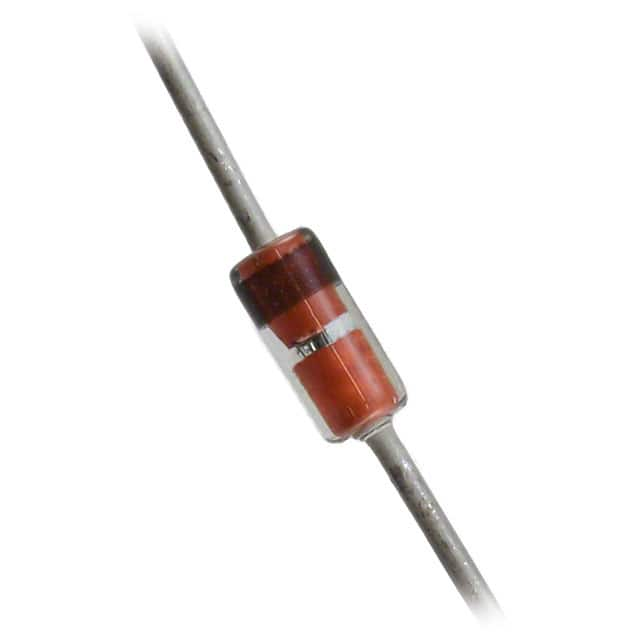Consulte las especificaciones para obtener detalles del producto.

1N758A Diode Encyclopedia Entry
Introduction
The 1N758A is a diode belonging to the semiconductor product category. This entry provides an overview of its basic information, specifications, pin configuration, functional features, advantages and disadvantages, working principles, application field plans, and alternative models.
Basic Information Overview
- Category: Semiconductor diode
- Use: Rectification, voltage regulation, signal demodulation
- Characteristics: Low forward voltage drop, high current capability, fast switching speed
- Package: Axial leaded, DO-35 glass package
- Essence: Silicon diode
- Packaging/Quantity: Typically available in reels or bulk packaging
Specifications
- Forward Voltage Drop: 0.7V (typical)
- Reverse Voltage: 5V
- Maximum Continuous Forward Current: 150mA
- Operating Temperature Range: -65°C to 200°C
- Storage Temperature Range: -65°C to 200°C
Detailed Pin Configuration
The 1N758A diode has two leads: 1. Anode (A) 2. Cathode (K)
Functional Features
- Low forward voltage drop ensures efficient power conversion
- High current capability allows for use in various applications
- Fast switching speed enables rapid response in signal demodulation
Advantages and Disadvantages
Advantages
- Efficient power conversion due to low forward voltage drop
- Versatile usage in different electronic circuits
- Fast response time for signal demodulation applications
Disadvantages
- Limited reverse voltage rating compared to other diodes
- Sensitive to temperature variations
Working Principles
The 1N758A diode operates based on the principle of semiconductor junction behavior. When forward biased, it allows current flow with a low voltage drop. In reverse bias, it blocks the current flow up to its rated reverse voltage.
Detailed Application Field Plans
The 1N758A diode finds applications in various fields, including: - Power supply circuits - Voltage regulation circuits - Signal demodulation circuits - Audio amplification circuits - LED driver circuits
Detailed and Complete Alternative Models
Some alternative models to the 1N758A diode include: - 1N914: General-purpose silicon diode - 1N4001: Standard rectifier diode - 1N5819: Schottky diode - 1N4733A: Zener diode
In conclusion, the 1N758A diode offers efficient power conversion, high current capability, and fast switching speed, making it suitable for various electronic applications. However, its limited reverse voltage rating and sensitivity to temperature variations are important considerations when selecting this diode for specific designs.
Word count: 387
Enumere 10 preguntas y respuestas comunes relacionadas con la aplicación de 1N758A en soluciones técnicas
Sure, here are 10 common questions and answers related to the application of 1N758A in technical solutions:
What is 1N758A?
- 1N758A is a zener diode with a voltage rating of 6.2V.
What is the typical application of 1N758A?
- The typical application of 1N758A is as a voltage regulator or voltage reference in electronic circuits.
What is the maximum power dissipation of 1N758A?
- The maximum power dissipation of 1N758A is 500mW.
What is the operating temperature range of 1N758A?
- The operating temperature range of 1N758A is -65°C to +200°C.
What is the tolerance of the voltage output for 1N758A?
- The tolerance of the voltage output for 1N758A is +/-5%.
Can 1N758A be used in reverse bias?
- Yes, 1N758A can be used in reverse bias as a voltage reference.
What is the forward voltage drop of 1N758A?
- The forward voltage drop of 1N758A is typically 1.2V.
Is 1N758A suitable for low current applications?
- Yes, 1N758A is suitable for low current applications due to its low leakage current.
Can 1N758A be used in voltage regulation for battery-powered devices?
- Yes, 1N758A can be used in voltage regulation for battery-powered devices to maintain a constant voltage level.
What are some common alternatives to 1N758A?
- Some common alternatives to 1N758A include 1N746A, 1N759A, and BZX55C6V2.

